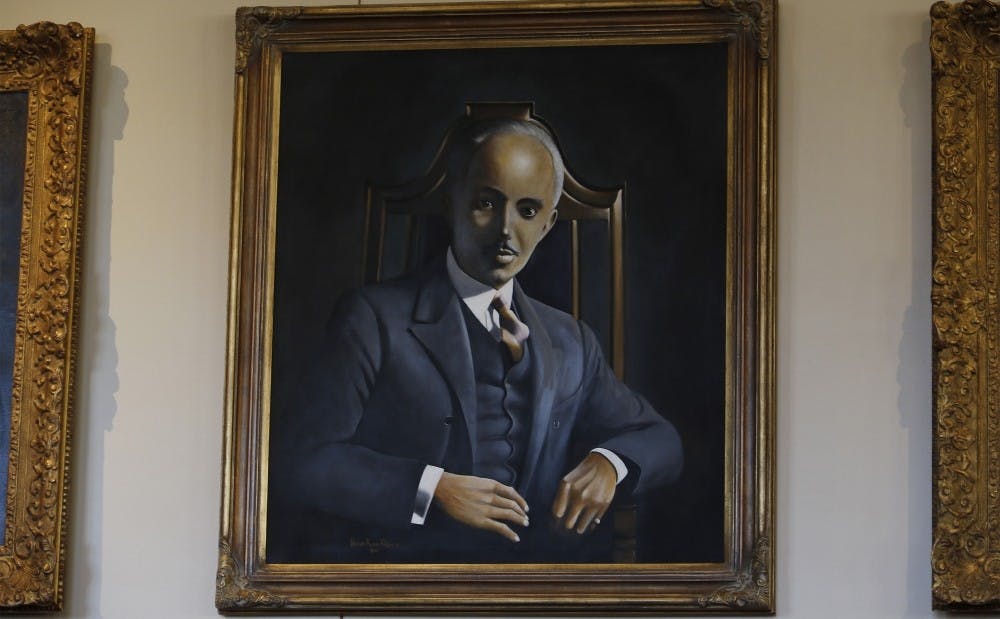President Richard Brodhead recently announced the formation of an advisory group to consider ways to honor Julian Abele, the black architect who designed the majority of West Campus but was never able to set foot on the segregated campus.
Abele was born in Philadelphia, where he became the first black graduate of the University of Pennsylvania's architecture department in 1902. He then continued his studies at Ecole Des Beaux Arts, a world-renowned art school in Paris, after which he joined the firm of the American architect Horace Trumbauer in 1906.
He advanced in 1909 to become the firm's chief designer. The Trumbauer firm designed and supervised the construction of West Campus between 1924 and 1935. In addition to his contributions to Duke, Abele participated in the planning of more than 400 buildings during his career, including the Philadelphia Museum of Art and the Widener Library at Harvard University.
“The Julian Abele story is one of the most amazing and distinctive features of Duke University," Brodhead said. “This was the most distinguished American university located in the former Confederacy, located in a state that had official segregation. The 1930s was the deepest depths of segregation. That during that time, this University chose a black architect to design its campus, is an amazing story.”
Abele took inspiration from many sources in designing Duke's campus. Its founders wanted Duke's architecture to follow the choices of peer universities, including the University of Chicago, Yale University and Princeton University.
“He really had an obsession with French architecture, and he put his own spin on it,” said sophomore Chris Cook, the great-great-grand nephew of Abele. “Obviously, you can see the Gothic references at Duke.”
Research by William King, who was University archivist from 1972 to 2002, found that University officials understood Abele’s role as chief designer of the campus, but that it was not public knowledge that he was black.
In 1986, Susan Cook, the great-grand niece of Abele, wrote a letter to the editorial board of The Chronicle mentioning that Julian Abele designed many of the buildings on West Campus. More than 50 years after the construction of the campus, Duke students were made aware that the designer of the buildings in which they lived and attended class was not able to visit the campus because, like much of the South, it was segregated.
Cook’s letter inspired Duke's Black Graduate and Professional Student Association to host the first annual Julian Abele Awards and Recognition Banquet in 1990, which included the unveiling of a commissioned portrait of Abele that now hangs in the Allen Building.
Amid campus-wide discussions about race and inequality, a list of student demands presented at the “Duke Tomorrow” meeting in November—the "Demands of Black Voices"—included the “representation of distinguished black individuals on buildings and monuments on campus.”
In particular, the students demanded that West Union be renamed Abele Union and that a statue of Abele be erected. Naming a building after the architect would be a satisfactory way of honoring Abele's legacy, Cook said.
Brodhead noted that recognizing Abele in some fashion has been a longstanding goal for the Board of Trustees.
“Two years ago, when we had the discussion of the name of the Aycock dorm, part of the original proposal was that Aycock should be renamed in honor of Julian Abele,” Brodhead said. “That was discussed by the Trustees at that time who recognized the appropriateness of something honoring Abele, but thought that that was a poor choice because it's not a piece of good architecture. In other words, this is not a brand new subject for them."
Amrith Ramkumar and Ryan Zhang contributed reporting.
Get The Chronicle straight to your inbox
Signup for our weekly newsletter. Cancel at any time.
Class of 2019
Editor-in-chief 2017-18,
Local and national news department head 2016-17
Born in Hyderabad, India, Likhitha Butchireddygari moved to Baltimore at a young age. She is pursuing a Program II major entitled "Digital Democracy and Data" about the future of the American democracy.

